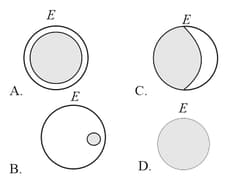Understanding Physics
Understanding Physics: Overview
This topic introduces us to basic discipline in the category of natural science. It also briefs on the two principal thrusts in physics along with laws and concepts related to physical science.
Important Questions on Understanding Physics
What is the meaning of Sanskrit word and Arabic word ?
What is the process of breaking down a complex system of equations into simpler elements known as?
What is the process of integrating the several unique laws of physics into a single theory called?
Which of the following are two thrusts in Physics?
What are the two principal thrusts in physics?
Which of the following is true in regard to the energy of an isolated system?
gives the
Where, is mass
is acceleration due to gravity
is vertical height
Assertion : In physics, we attempt to derive the properties of a bigger, more complex system from the properties and interactions of its constituent simpler parts.
Reason : This approach is called unification and is at the heart of physics.
A total solar eclipse is observed from the earth. At the same time an observer on the moon views the earth. She is most likely to see ( denotes the earth)

Which of the following is macroscopic quantity?
What are the two principal thrusts in physics?
Relate the technology with the scientific principle:
| Technology | Scientific principle |
| 1. Steam engine | A- Propagation of e.m wave |
| 2. Nuclear reactor | B- Newtons law of motion |
| 3. Radio and TV | C- superconductivity |
|
4. Computers |
D- Role of DNA in heredity |
| 5. Lasers | E- Thermodynamics |
| 6. Ultra-high magnetic fields | F- Faraday law of induction |
| 7. Rocket propulsion | G- Conversion of gravitational potential energy into electrical energy |
| 8. Genetic engineering | H- Motion of charge particle into an electric field |
| 9. Electric generators | I- Fission of uranium by slow neutrons |
| 10. Hydroelectric power | J- Amplification by population inversion |
| 11. Aeroplanes | K- Digital logic of the electronic circuit |
| 12. Particle accelerator | L- Bernoulli's principle in fluid dynamic |
| 13. Photocell | M- Thin-film optical interference |
| 14. Electron microscope | N- Reflection of ultrasonic waves |
| 15. Non-reflecting coating | O- Total internal reflection in light |
| 16. Optical fibre | P- Photoelectric effect |
| 17. Sonar | Q- Wave nature of electron |
Match the scientist with contribution/ discovery
| Scientist | Contribution/ discovery |
| (i) Faraday | (a) Law of gravitation |
| (ii) Rutherford | (b) Quantum model of hydrogen |
| (iii) Chadwick | (c) Unification of light and electromagnetism |
| (iv) Bohr | (d) Theory of relativity, explanation of photoelectric effect |
| (v) Newton | (e) x-rays |
| (vi) Maxwell | (f) Unification of weak and electromagnetic interaction |
| (vii) Salaam | (g) Law of electromagnetic induction |
| (viii) Einstein | (h) Expansion of universe |
| (ix) Roentgen | (i) Neutron |
| (x) Madam Curie | (j) Nuclear model of atom |
| (xi) J.J. Thomson | (k) Wave nature of light |
| (xii) de Broglie | (l) Transistor |
| (xiii) John Bardeen | (m) Electron |
| (xiv) Hubble | (n) Discovery of radium |
Size of the universe is in the order of
What is scientific method? Write down its different steps.
